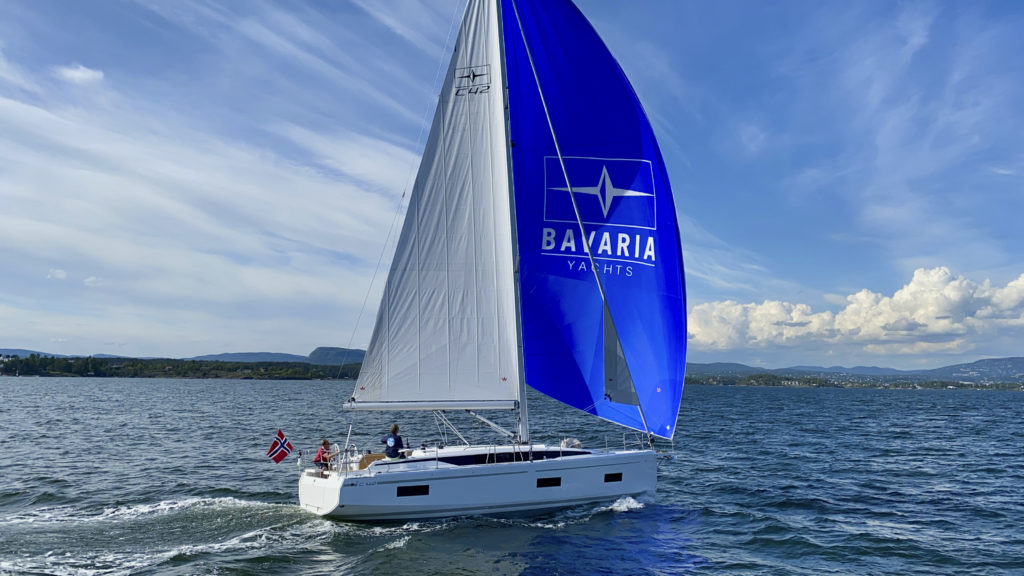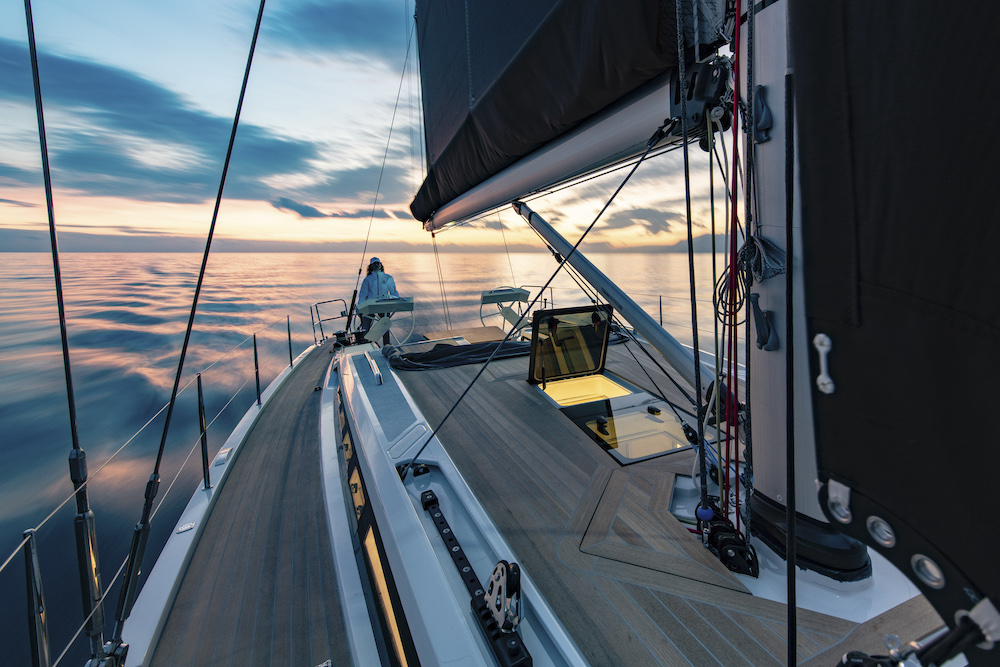It is a relatively young company. Cossutti Yacht Design – Cossutti & Ganz Partners was officially founded in 2013. However, one only has to look at the results achieved in less than ten years to see for oneself the extent of the work accomplished. From Bavaria to Italia Yachts, from Salona to More Yachts, just to name a few, the Udine-based studio has counted many projects on its list of achievements. The reason for this success? It’s not accidental. It’s evident in the name itself. Starting with Maurizio Cossutti.

There is no need to add anything else. Those who know about sailing know this well. Having graduated in naval engineering with a thesis on the America’s Cup, Cossutti grew up professionally at Roberto Starkel’s school. An important period in his training. The same goes for his experience at Marine Technologies Boatyard, the boatyard that Alessandro Vismara met with Freek Koppelmans and that produced the V34, V40 and V46, boats that were considered cutting-edge for their time. Yes, because the world of racing has always been an important reference point for Cossutti.

A veritable research laboratory for experimenting and fine-tuning new design solutions with the declared aim of raising the bar of performance ever higher. Hence the decision to set up on his own. In 2008 Cossutti left the shipyard, which in the meantime had changed its name to 2M Marine and built to his own design the M37, one of the most successful ORC (then IMS) boats, and decided to open the Cossutti Yacht Design studio. He started working with the Nautilus yard in Rome and his name became known on the race courses thanks to projects such as the Bonin 31 and the 358 IRC, not to mention his work on optimising boats of the calibre of Mascalzone Latino and Brava. But that’s just the beginning.

A year later his route crossed with that of Alessandro Ganz. And there was an immediate spark. There are many reasons for this. Ganz, born in 1985, cut his teeth at the University of Trieste where he took a degree in naval engineering before completing his training with a Master’s in yacht design at Southampton. The rest of the story is one of a series of design successes, including the NM38S. Launched in 2011, the first hull designed by both of them has been on the top step of the podium several times in as many regattas and won Italian and World championship.

Or the Bavaria C42 model that triumphed at the 2021 European Boat of The Year, the second success at this event after that of 2013 with Italia Yachts 1398, which had contributed in no small part to making the Shipyard and Designers known in a more international context. Today, the design studio has earned its place at the forefront of yacht design. One of its undoubted merits is its ability to develop a structured working methodology, capable of meeting the needs of yards that produce on an industrial scale. In this sense, the experience with Bavaria proved fundamental.

“For the first time,” says Cossutti, “we were not dealing with a client in the sense of a single owner, or of small ‘niche’ series, but with a boat manufacturer who had entrusted us with the design of a model to be produced in large series with a clientele with very diverse needs. And here the reasoning took a quantum leap.

“The approach demanded a change of pace from the studio,” adds Ganz, “the aspects of naval architecture and design had to interface with those more closely related to product engineering, prompting us to adopt an increasingly integrated and vertical approach. This experience proved to be extraordinarily important in the firm’s growth, allowing it to take advantage of other opportunities, culminating in the collaboration with Nautor’s Swan, a shipyard for which it supervised the engineering of the 48, 55 and 58.

The photograph now shows a reality in which Cossutti closely follows the aspects linked to the water lines, and more generally to naval architecture, while Ganz takes care of the exterior design. He is also responsible for the development and updating of the design software, an activity carried out together with a team of engineers who actively collaborate with the studio.

“Our range of action has become wider and wider, and at the design level we take care of every aspect, including the details, always keeping the dynamics of the construction processes in mind,” continues Ganz. A 360° vision that cannot be ignored today, and which represents the stylistic signature and trademark of Studio Cossutti. Among the projects currently at an advanced stage are the More 50, to which two new Italia Yachts models have been added, more precisely the IY 12.98 and the IY 20.98. The latter, once in the water, will be the biggest ever built by the yard. This is a fine achievement that best sums up a winning partnership that has been going on for some time.

As with the imagination, there are no boundaries at Studio Cossutti Yacht Design. On the contrary, after so much sailing it now seems to be time for the engine. The first glimpse of the capabilities displayed by the Friuli-based studio came with Respiro. It could be the first chapter of a book yet to be written. The premises are all there. It could not be otherwise. The motor world has always benefited from the transfer of knowledge and skills gained in the sailing world. The arrival of this new boat, which made its debut at the Genoa Boat Show, sublimates the concept of form and function. Its small size – 6.90 metres in length – should not mislead. Every single aspect, both in the study phases and during construction, has been followed with extreme care and attention.

The project is the result of a meeting between the Venmar shipyard in Venice, Studio Cossutti Yacht Design and Yamaha. The external lines are reminiscent of the runabouts and boats that populate the Venice Lagoon. These references to nautical culture are enhanced by the use of noble woods such as mahogany for the deck and the coping, plus teak for the floor. Tradition then gives way to innovation with the use of carbon fibre, basalt and linen to build the hull.

Finally, the hull. Designed by the Friuli-based studio, it was conceived, on the one hand, to enhance the electric propulsion of Yamaha’s Harmo engine and, on the other, to offer maximum efficiency in displacement and semi-displacement sailing at low speeds. “An exciting project,” comments Cossutti. And we’re willing to bet that it won’t be the only one.





